1. Define differences
1.1. Between each promotion mix element
1.2. Between combinations of promotion mix elements
1.2.1. Leading with a Sales Force / Trade Promotion emphasis leads to a 'Push' strategy. This encourages channel members to promote the product to the final consumer
1.2.2. Heavy emphasis on advertising and consumer promotion leads to a 'Pull' strategy. This leads consumers to demand the product from channel members, who then request it from the producer
2. Differences
2.1. Channels of communication
2.2. Short / Long Term
2.3. Customer
2.3.1. Segmented
2.3.2. Mass Market
2.3.3. Tailored
2.4. Geography
2.5. Creativity
2.6. Price
2.7. Customer loyalty
3. Promotion Mix
3.1. Advertising
3.1.1. Mass Market Approach (changing via the internet)
3.1.1.1. Often a broad brush approach and cannot be as detailed as a person to person technique
3.1.1.2. Passive in that customers cannot respond, or feel they can respond
3.1.2. Channels
3.1.2.1. Broadcast
3.1.2.2. Radio
3.1.2.3. Print
3.1.2.4. Internet
3.1.2.5. Outdoor
3.1.2.6. Other forms
3.1.3. Definitions
3.1.3.1. A message from a source designed to be received by many viewers
3.1.3.2. Any paid form of non-personal presentation and promotion of ideas, goods or services by an identified sponsor
3.1.3.3. From the Latin 'to turn'
3.1.4. Enables a large geographic reach
3.1.5. As the cost of entry to many sources of advertisement are high, it says something about the status of the company
3.1.5.1. The potentially high cost of entry makes this mix out of some companies reach
3.1.5.2. On a per person basis, costs are actually very cheap
3.1.6. Useful for reassuring the buyer about the legitimacy of the product. Beneficial in a mass market where sales are linked to being accepted publically (e.g. Nike Trainers etc)
3.1.7. Allows the company a great deal of creative freedom to enhance their product over and above the potential reality (e.g. Lynx Deoderant)
3.1.8. Enables both long and short term strategies
3.1.8.1. Guiness uses consistently creative adverts to affirm it's status as a product that is different, individual, creative. A long term strategy to differentiate its product
3.1.8.2. B&Q uses advertising to announce discounted sale periods
3.1.8.3. Harrods uses adverts to 1. Announce sale periods. 2. Uses the adverts to reaffirm its long term strategy of being the most exclusive store in London
3.2. Sales Promotion
3.2.1. Channels
3.2.1.1. Discounts
3.2.1.2. Coupons
3.2.1.3. Point of purchase displays
3.2.1.4. Demonstrations
3.2.2. Advertising often mixed in with Sales Promotion
3.2.3. Definitions
3.2.3.1. Inducements to buy a product
3.2.3.2. Short-term incentives to encourage the purchase or sale of a product or service
3.2.3.3. Encourages customers to try the product
3.2.4. Directly attracts customer attention
3.2.4.1. Advertising encourages people to buy, sales promotion says 'buy it now'
3.2.5. Short term strategy to boost sales
3.2.6. Geographic spread can be as large as the company wishes, from local to global
3.2.7. Enables a limited amount of creative space to the promotion of the product
3.2.8. Price is dependent on aims of sales promotion
3.2.9. Not effective in building long term brand loyalty as key diferentiator for this tool is based around price or more concisely 'value' for the customer in the short term
3.3. Public Relations (PR)
3.3.1. Documentary Progs / Newspapers
3.3.2. Mass Communication tool
3.3.3. Thought to be more trustworthy than Advertising
3.3.4. Channels
3.3.4.1. Press releases
3.3.4.2. Sponsorships
3.3.4.3. Special Events
3.3.4.4. Web pages
3.3.5. Long term strategy
3.3.6. Definitions
3.3.6.1. Building good relations with the company's various publics by obtaining favourable publicity, building up a good corporate image and handling or heading off unfavourable rumours, stories and events
3.3.6.2. A message about the product from a 3rd party source
3.3.7. Talks about the real world. Message seems to be more believable
3.3.7.1. Especially compared to advertising
3.3.8. Picks up people that advertising & sales misses
3.4. Personal Selling
3.4.1. Short term promotion technique
3.4.2. Channels
3.4.3. Enables person to person contact
3.4.3.1. Allows the product to be adjusted more easily to customers needs
3.4.4. Requires a long term commitment
3.4.4.1. Cannot be turned on and off easily
3.4.4.2. Sales force is harder to build up and change
3.4.5. Tailored to the customer (opposite end of scale to mass marketing)
3.4.6. Geographic spread is possible, but increases costs to a much greater degree than other promotion tools
3.4.7. High cost based on per person coverage
3.4.7.1. Most expensive promotion tool (per person)
3.4.8. Definitions
3.4.8.1. Company representatives selling on a one-to-one basis
3.4.8.2. Personal presentation by the firms sales force for the purpose of making sales and building customer relationships
3.4.8.3. Common in business-to-business
3.5. Branding*
3.5.1. Possible to include Branding as Promotion device
3.5.2. Shorthand way of communication with customers
3.6. Direct Marketing
3.6.1. Channels
3.6.1.1. Catalogues
3.6.1.2. Telephone marketing
3.6.1.3. Kiosks
3.6.1.4. Internet
3.6.1.5. + more
3.6.2. Definitions
3.6.2.1. Direct connections with carefully targeted individual consumers both to obtainan immediate response and to cultivate lasting customers
3.6.3. Specific in nature. Direct to individual customer
3.6.4. Can be highly tailored to the individual
3.6.5. Highly successful in targeted marketing efforts and one-to-one customer relationships
